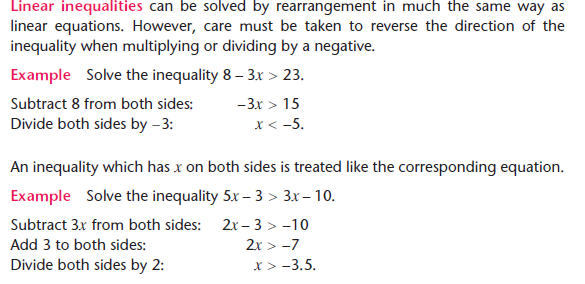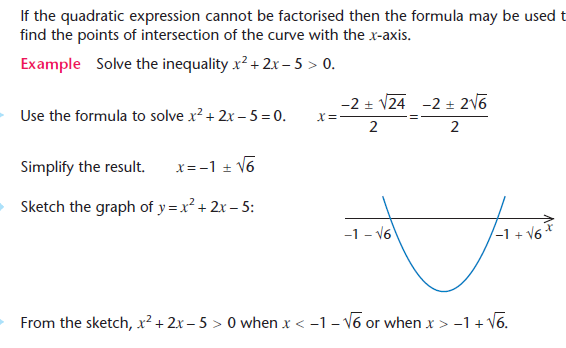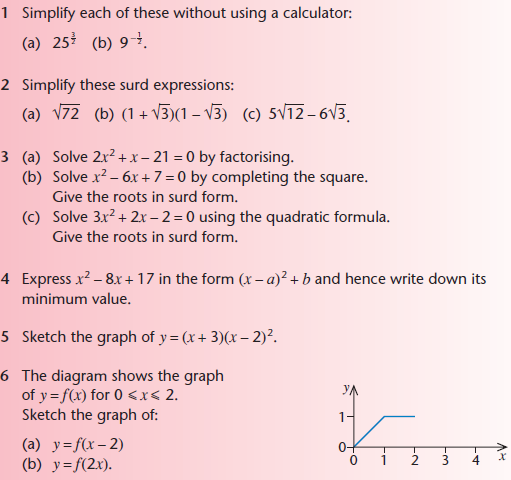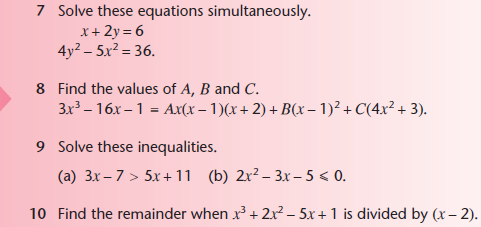When dealing with inequalities, it is important to remember that if you divide or multiply by a negative number, the direction of the inequality is changed.
When solving quadratic inequalities (inequalities with x2 in them), it is necessary to analyse the various cases to solve the inequality.
Example
Solve x2 + 3x + 2 > 0
Now, we can factorise the left hand side to get:
(x + 2)(x + 1) > 0
To solve this, we need to divide it up into a number of cases, based upon when the sign of one of the factors changes:
| x < -2 | -2 < x < -1 | x > -1 | |
| (x + 2) | negative | positive | positive |
| (x + 1) | negative | negative | positive |
| (x + 2)(x + 1) | positive | negative | positive |
So when x < -2, for example, we know that (x + 2) is less than 0 and (x + 1) is less than zero. Therefore (x + 2)(x + 1) > 0 (since negative times negative = positive).
From the table, therefore, (x + 2)(x + 1) > 0 when x < -2 or x > -1 .
Drawing a table like this makes things easier.
Alternatively, you can draw the graph of x2 + 3x + 2 > 0 and look at where the graph lies above the x-axis. You should get the same answer.
Linear Inequalities

Quadratic Inequalities

PROGRESS CHECK


